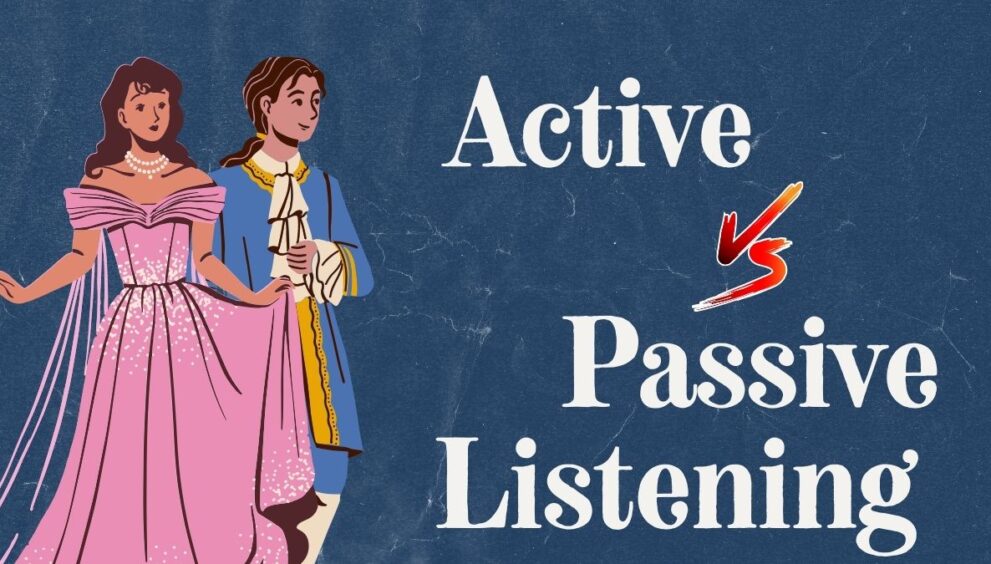Difference Between Active and Passive Listening

The main difference between active and passive listening is that active listening involves fully concentrating, understanding, responding, and remembering what is being said. It requires the listener to fully engage with the speaker. Meanwhile, passive listening is simply hearing the words without fully understanding or responding to them.
Table of Contents (TOC)
- Difference Between Active and Passive Listening
- What is Active Listening?
- What is Passive Listening?
- Key Differences Between Active and Passive Listening
Difference Between Active and Passive Listening
For better clarity, let’s analyze the difference between active and passive listening in a tabular format:
| Aspect | Active Listening | Passive Listening |
|---|---|---|
| Attention | Focused attention on the speaker | Easily distracted or zoned out |
| Body Language | Engaged body language (eye contact, nodding, etc.) | Disengaged body language |
| Clarification | Asking clarifying questions | Not seeking clarification |
| Verification | Reflecting back and paraphrasing | Not verifying understanding |
| Feedback | Providing appropriate feedback | Minimal or no feedback |
| Judgment | Suspending judgment and assumptions | Making assumptions and judgments |
| Empathy | Listening with empathy | Listening without empathy |
| Perspective | Seeking to understand the speaker’s perspective | Focusing on one’s own viewpoint |
| Interruption | Allowing the speaker to complete their thoughts | Interrupting frequently |
| Environment | Creating a comfortable environment for the speaker | Not considering the speaker’s comfort |
What is Active Listening?
Active listening is a communication technique that involves fully concentrating, understanding, responding, and remembering what is being said. It’s a way of listening and responding to another person that improves mutual understanding.
What is Passive Listening?
Passive listening refers to the act of hearing and receiving information without actively responding or engaging with the speaker. It often involves simply taking in the information without providing any feedback or demonstrating active understanding.
Key Differences Between Active and Passive Listening
Here are the key differences between active listening and passive listening:
- Active listening involves willfully focusing on the speaker and understanding their message. Meanwhile, passive listening is simply hearing the words without fully engaging or comprehending.
- Active listening encourages the listener to provide feedback, ask clarifying questions, and paraphrase the speaker’s points, ensuring mutual understanding. In contrast, passive listening is a one-way communication where the listener remains detached and does not contribute to the exchange.
- Passive listeners often exhibit signs of disengagement, such as mind-wandering, fidgeting, or attending to other tasks simultaneously. In contrast, active listeners maintain eye contact, use affirmative body language, and eliminate distractions, thus demonstrating their undivided attention.
- Active listening enables stronger connections, empathy, and trust between the speaker and listener, as the speaker feels heard and valued. In contrast, passive listening can create a sense of disconnection and misunderstanding, potentially straining the relationship.
Must Explore:
Difference Between Love and Like
Difference Between Love and Attraction























































































































